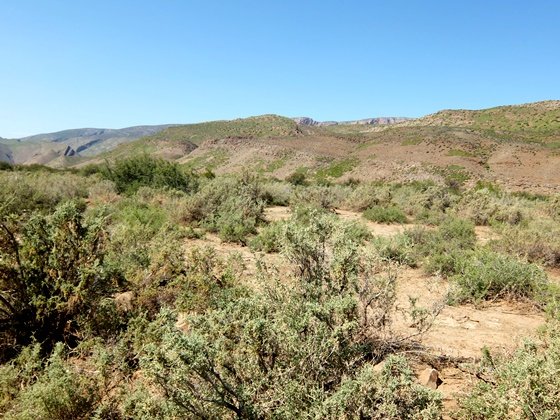Floodplain in the Karoo

In the Great Karoo north of the Swartberg Mountains many seasonal watercourses, big and small, cross the flat low-lying areas. Dry most of the time, sometimes no banks to define and limit the occasional rivers narrowly, broad floodplain floors grow a fine silty clay carpet covered in sparse vegetation.
Annuals follow rain, leaving their dry seed husks on pale stalks upon the mudflat or sandy surfaces. The large, deep-rooted Salsola or ganna bushes and the occasional Vachellia karroo or sweet thorn tree serve as housing for insect, bird and mammal. The reptiles may dig in, probably a little higher up where the harder ground of the slopes offer more durable living quarters.
Runoff from these slopes during successive inundations deliver regular mud deposits with the water onto this land, causing the soil to become deep, the taproots long.
Every fifty to a hundred years or so a memorable deluge brings huge walls of water accumulating suddenly in the fewer, bigger rivers. This gushing brown mass intimidates as it meanders at speed along the set and new routes of decreasing elevation through the big kloofs to the sea. It accumulates whatever it meets without notice and deposits it as debris wherever.
The havoc caused by the raging torrents change farms and scenery, ending some lives. Reminders of the power to be unleashed by one of the great forces of nature linger here if one cares to look for the signs. Old folks tell such unbelievable stories when the sun goes down on happy days.

